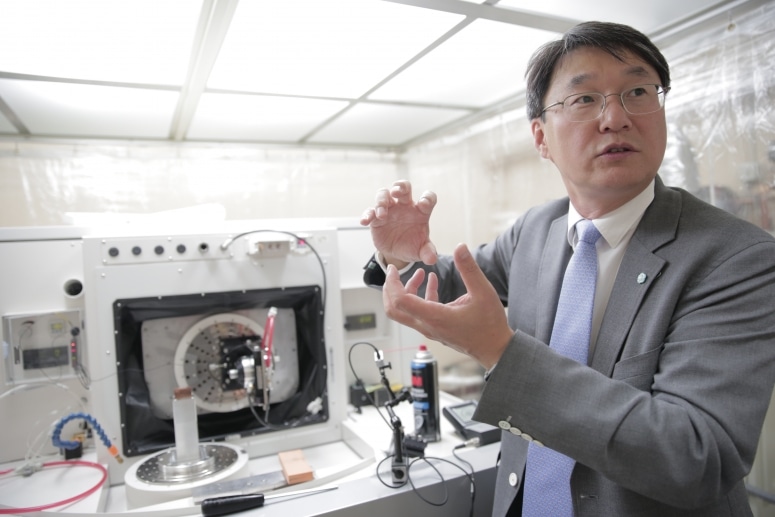Sep 16 2016
The University of Wisconsin–Madison College of Engineering has a new addition in the form of a unique machine capable of milling in 3D with nanometer precision.
 Professor Sangkee Min explains the ROBONANO, the first machine of its kind in North America. The machine’s nano precision could open up improved and novel approaches to the manufacturing of everything from semiconductors to mobile devices to scientific instruments. (Credit: STEPHANIE PRECOURT)
Professor Sangkee Min explains the ROBONANO, the first machine of its kind in North America. The machine’s nano precision could open up improved and novel approaches to the manufacturing of everything from semiconductors to mobile devices to scientific instruments. (Credit: STEPHANIE PRECOURT)
Known as the ROBONANO α-OiB, the machine is the first of its kind in North America. Its advanced technological capabilities are representative of the advanced manufacturing of the future.
The Japanese robotics manufacturer FANUC has loaned the machine on a multiyear agreement to the laboratory of Sangkee Min, who is a UW–Madison professor in the Department of Mechanical Engineering and the Grainger Institute for Engineering. With the machine’s ability, Min and his team can explore new research opportunities. He hopes that these will pave way for innovative approaches for the manufacturing of many things from semiconductors to toys and mobile devices to scientific instruments.
There are numerous configurations for scribing, milling and cutting of materials in this 5-axis machine. But what makes ROBONANO superior to its other contemporary counterparts is that it can cut materials at the nanoscale with a precision that is two orders of magnitude more than that of its counterparts presently used in advanced manufacturing.
Many materials have different properties at the nanoscale that create all sorts of different possibilities that aren’t possible with conventional machines.
Min.
The researcher will study the machine’s suitability in the manufacturing of emerging materials, and available materials such as synthetic sapphire, which has the potential to be a shatter-proof alternative to glass for tablets and smartphone screens.
Synthetic sapphires are created by heating aluminum oxide to very high temperatures. It is hard to manufacture these sapphires at a large scale as the material is very brittle and hard to handle. But, when Min studied the material with ROBONANO in Japan he found that synthetic sapphire was more pliable at the nano scale.
Min hopes to find out new possibilities for manufacturing designs that may arise with machining at a nanoscale. The manufacturing limitations impede the creativity of designers and slow innovations. Min believes that the smartphone design is a perfect example for this “design for manufacturing” paradigm that results in stale product designs.
The design of the Apple iPhone has not changed very much since from the first one to the latest iPhone that was just announced. It’s the same for a lot of products. Vehicles are the same. A Ford looks like a Ford.
Min
This is because manufacturers have long-term investments in supply chains that are expensive and complicated to change. Min’s research with the ROBONANO will help detect different ways to speed up the process and overturn the manufacturing paradigm — manufacturing for design.
“I want to be able to ask the manufacturer, ‘what is your perfect design?’ and be able to provide that,” says Min, who has already helped a national laboratory majorly enhance the imaging capabilities of a microscopic instrument it manufactures.
Japan’s semiconductor industry has been using ROBONANO for a decade. The semiconductor industry is one of the many that Min believes will improve with the advanced capabilities of ROBONANO. The researcher has approached many popular brands including Lego to discuss new fabrication methods.
The opportunities are almost limitless for improving products and manufacturing processes with this machine.
Min